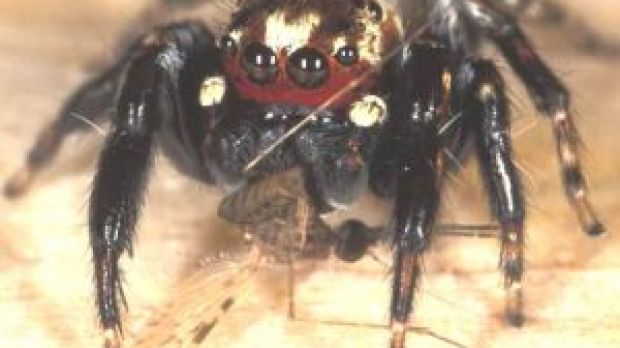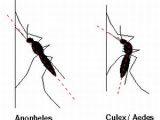Blood is a complete aliment, it contains proteins, sugars, fats, all vitamins and minerals.
No wonder so many creepy creatures gorge on it: mosquitoes, ticks, leeches, stinky bugs, fleas, lice, and even bats!...
But there are also predators which engorge blood suckers full with the precious stuff. What's curious is that researchers found a jumping spider in East Africa that not only craves on blood full mosquitoes, but specifically on those loaded with the deadly malaria parasite. "These predatory spiders could help control the lethal disease," scientists say.
Malaria is one of the most common infectious diseases, infecting 300-500 million people annually, out of which 1-3 million die, mostly children and mostly in Africa. "My dream would be that people could be educated to recognize this little animal and not kill it when found inside houses, as it often is, apparently in search of food," said behavioral ecologist Ximena Nelson at Macquarie University in Sydney, Australia. "If these spiders are left in these houses, they may diminish the number of blood-fed mosquitoes leaving the house, and thus prevent someone else from becoming infected."
The research team was made up by Nelson and colleague Robert Jackson at the University of Canterbury in Christchurch, New Zealand. They studied the jumping spider Evarcha culicivora (photo, devouring a mosquito), from near Lake Victoria, Africa's largest lake.
Jumping spiders are known for leaping from 10 to 40 times their own body length (like a human leaping up to 220 feet (70 m)), and unlike most spiders, these ones have keen eyesight, capable of making out details 40 body-lengths away.
E. culicivora was already proven to prefer female mosquitoes over non-biting midges, male mosquitoes (which do not suck blood), and female mosquitoes that fed on sugar. "We noticed these 5-millimeter spiders inside houses attacking mosquitoes when there seemed to be an overabundance of midges that could have been attacked," said Nelson.
Lake Victoria region suffers one of the most severe malaria impacts, even by African standards.
The researchers checked if E. culicivora distinguished Anopheles mosquitoes, the vectors of the malaria, over Culex mosquitoes, which do not harbor the parasite.
The investigators tested the spiders with virtual prey depicted with animated 3-D drawings; they also employed motionless lures made from dead prey mounted on cork disks in natural postures. Culex mosquitoes keep their body parallel to the ground while Anopheles mosquitoes angle their abdomens from the ground (image).
Younger spiders, because of their smaller size, cannot capture a mosquito from above, but use in their advantage the Anopheles posture by moving behind and under the mosquito's abdomen and then attacking from below.
The jumping spiders clearly preferred to chase or leap onto both virtual and dummy Anopheles over Culex mosquitoes, even when they were hungry.
This is the first predatory species found to be specialized on Anopheles females. "That they can do this based on vision alone when it is hard for human eyes to be able to distinguish this level of detail was, for me, the most surprising finding of this aspect of the work," said Nelson.

 14 DAY TRIAL //
14 DAY TRIAL // 
